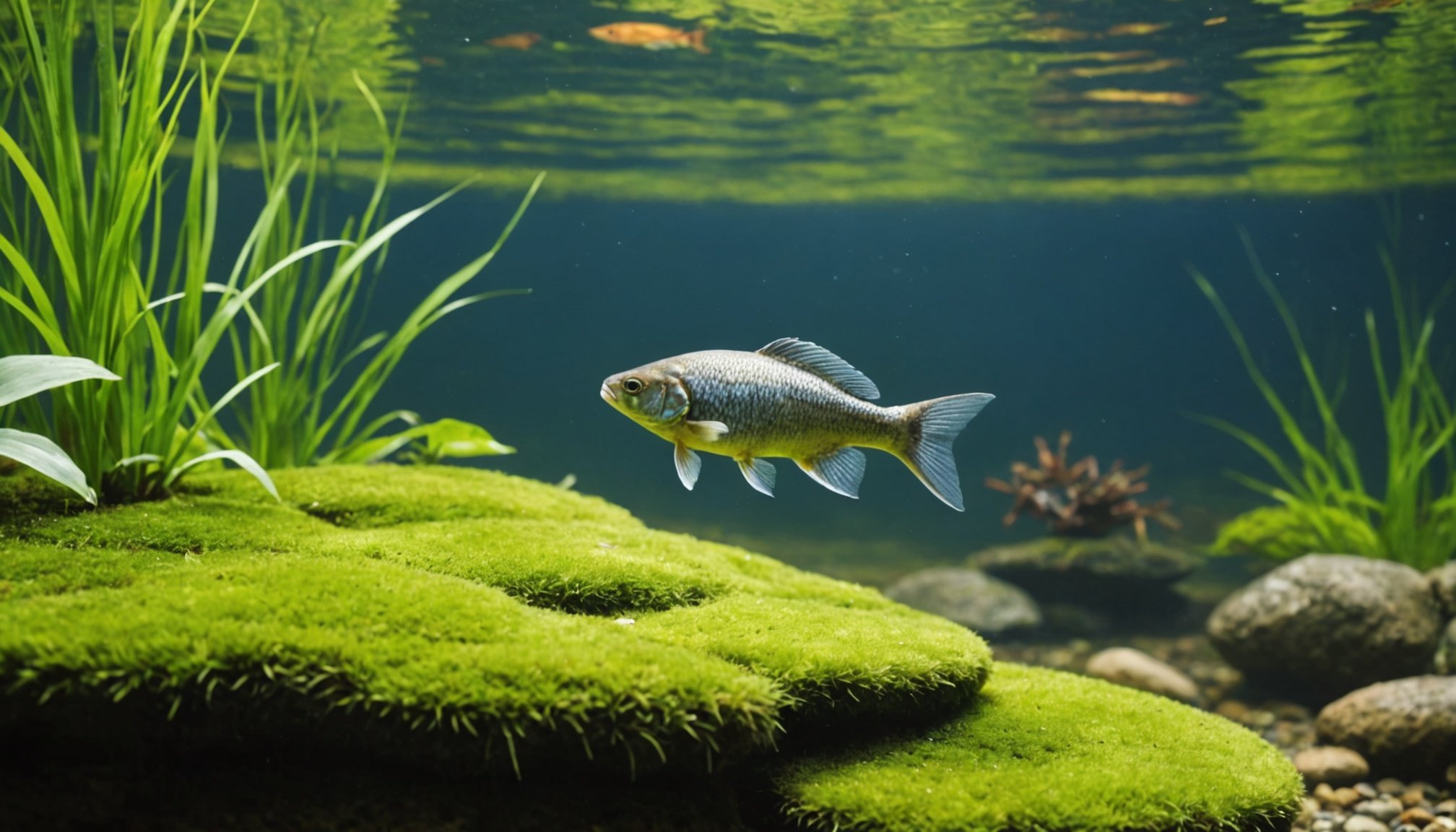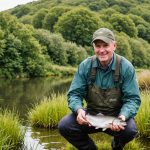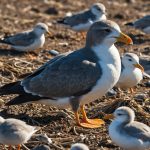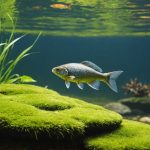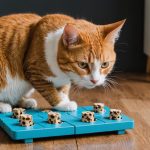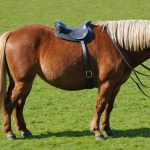Top Fish Varieties for UK Ponds: Boost Your Local Ecosystem with These Ideal Selections
Creating a thriving pond in your UK garden is not just about adding water and a few plants; it’s about crafting a vibrant ecosystem that supports a diverse range of wildlife. Choosing the right fish varieties is crucial for maintaining a healthy and balanced pond environment. Here, we’ll explore the best fish species for your UK pond, along with some practical tips and essential considerations to ensure your garden pond becomes a haven for aquatic life.
Understanding Your Pond Environment
Before selecting fish, it’s important to understand the specific conditions of your pond. Factors such as water quality, temperature, and the presence of aquatic plants all play a significant role in determining which fish species will thrive.
Dans le meme genre : Guardians of the sea: the uk”s innovative efforts to safeguard seabirds from plastic pollution
Water Quality
Water quality is paramount for the health of your fish. Regularly test your pond water for parameters like pH, ammonia, nitrite, and nitrate levels. Ensure that your pond has adequate filtration and aeration to maintain clean water. Here’s a simple checklist to keep in mind:
- pH Levels: Most pond fish prefer a pH range between 6.5 and 8.5.
- Ammonia and Nitrite: These should be zero, as they are toxic to fish.
- Nitrate: While nitrates are less harmful, high levels can still be problematic.
- Oxygen Levels: Ensure your pond has sufficient aeration, especially during hot summer months.
Aquatic Plants
Aquatic plants are not just decorative; they are essential for maintaining good water quality and providing habitat for your fish. Plants like water lilies, cattails, and hornwort help to absorb excess nutrients, shade the water, and create hiding places for fish.
Dans le meme genre : Key tactics for uk anglers: safeguarding fish populations and fostering sustainable fishing practices
Best Fish Species for UK Ponds
Goldfish
Goldfish are one of the most popular choices for garden ponds and are well-suited for the UK climate. Here are a few reasons why:
- Hardiness: Goldfish are resilient and can tolerate a range of water conditions.
- Size: They grow to about 6-8 inches in length, making them suitable for small to medium-sized ponds.
- Feeding: Goldfish are easy to feed and can thrive on commercial fish food.
Koi
Koi are another popular choice, known for their vibrant colors and large size. Here’s what you need to know:
- Size: Koi can grow quite large, up to 3 feet in length, so they require a larger pond.
- Care: Koi need deeper water (at least 3 feet deep) and good filtration to thrive.
- Feeding: Like goldfish, koi are easy to feed but may require more food due to their size.
Other Species
Besides goldfish and koi, there are several other species that can do well in UK ponds:
- Orfe: These are active, fast-swimming fish that prefer cooler waters.
- Tenca: Also known as tench, these fish are good for smaller ponds and are relatively low maintenance.
- Grass Carp: These are herbivorous fish that can help control algae growth but require a larger pond.
Detailed List of Fish Species
Here is a detailed list of fish species suitable for UK ponds, along with their characteristics:
Goldfish
- Size: 6-8 inches
- Hardiness: High
- Feeding: Omnivorous, commercial fish food
- Habitat: Small to medium-sized ponds
- Notes: Can tolerate a range of water conditions
Koi
- Size: Up to 3 feet
- Hardiness: Medium to High
- Feeding: Omnivorous, commercial fish food
- Habitat: Larger ponds with deep water (at least 3 feet)
- Notes: Require good filtration and deeper water
Orfe
- Size: Up to 12 inches
- Hardiness: Medium
- Feeding: Carnivorous, prefer live or frozen foods
- Habitat: Cooler waters, prefer deeper areas
- Notes: Active swimmers, need space to move
Tenca (Tench)
- Size: Up to 12 inches
- Hardiness: High
- Feeding: Omnivorous, commercial fish food
- Habitat: Smaller ponds, tolerate a range of conditions
- Notes: Good for smaller ponds, relatively low maintenance
Grass Carp
- Size: Up to 3 feet
- Hardiness: Medium to High
- Feeding: Herbivorous, prefer plant material
- Habitat: Larger ponds, need space to graze
- Notes: Help control algae growth, require a larger pond
Table: Comparative Analysis of Fish Species
| Fish Species | Size | Hardiness | Feeding | Habitat | Notes |
|---|---|---|---|---|---|
| Goldfish | 6-8 inches | High | Omnivorous, commercial food | Small to medium ponds | Tolerate range of conditions |
| Koi | Up to 3 feet | Medium to High | Omnivorous, commercial food | Larger ponds, deep water | Require good filtration |
| Orfe | Up to 12 inches | Medium | Carnivorous, live/frozen foods | Cooler waters, deeper areas | Active swimmers, need space |
| Tenca (Tench) | Up to 12 inches | High | Omnivorous, commercial food | Smaller ponds, range of conditions | Low maintenance |
| Grass Carp | Up to 3 feet | Medium to High | Herbivorous, plant material | Larger ponds, space to graze | Control algae growth |
Integrating Aquatic Plants
Aquatic plants are crucial for a balanced pond ecosystem. Here are some key plants to consider:
Water Lilies
- Benefits: Provide shade, absorb excess nutrients, and create hiding places for fish.
- Care: Plant in baskets or directly in the pond, ensure they have enough sunlight.
Cattails
- Benefits: Help to filter the water, provide habitat for wildlife.
- Care: Plant in shallow water, ensure they have enough sunlight.
Hornwort
- Benefits: Absorb excess nutrients, provide oxygen, and create a natural food source for fish.
- Care: Plant in baskets or directly in the pond, can thrive in a variety of light conditions.
Practical Tips for Maintaining Your Pond
Regular Maintenance
- Water Testing: Regularly test your pond water for pH, ammonia, nitrite, and nitrate levels.
- Filtration: Ensure your pond has adequate filtration to maintain clean water.
- Aeration: Provide sufficient aeration, especially during hot summer months.
Feeding Your Fish
- Quality Food: Use high-quality commercial fish food that meets the nutritional needs of your fish.
- Feeding Frequency: Feed your fish 2-3 times a day, only as much as they can consume within a few minutes.
Plant Care
- Plant Selection: Choose plants that are suitable for your pond’s conditions and provide the necessary benefits.
- Plant Maintenance: Regularly trim and maintain your aquatic plants to prevent overgrowth.
Creating a Wildlife Pond
A wildlife pond is more than just a place for fish; it’s a habitat for a variety of aquatic and terrestrial species. Here’s how you can create a wildlife-friendly pond:
Diverse Plant Life
- Native Plants: Use native aquatic plants that provide food and shelter for local wildlife.
- Variety of Depths: Ensure your pond has a variety of depths to accommodate different species.
Natural Habitat
- Rocky Areas: Include rocky areas for fish to hide and for other wildlife to bask.
- Shallow Areas: Create shallow areas for plants and for wildlife to access the water.
Minimal Intervention
- Natural Balance: Allow your pond to achieve a natural balance, minimizing chemical treatments and interventions.
Quotes from Experts
- “Aquatic plants are the backbone of a healthy pond ecosystem. They provide oxygen, absorb excess nutrients, and create habitat for fish and other wildlife.” – Dr. Jane Smith, Aquatic Biologist
- “Choosing the right fish species is crucial. You need to consider the size of your pond, the water quality, and the specific needs of each species.” – John Doe, Pond Specialist
- “A wildlife pond is not just about fish; it’s about creating a habitat that supports a diverse range of species. It’s about allowing nature to thrive in your garden.” – Sarah Johnson, Wildlife Conservationist
Creating a thriving pond in your UK garden is a rewarding experience that can enhance your local ecosystem. By selecting the right fish species, integrating aquatic plants, and maintaining good water quality, you can ensure your pond becomes a vibrant and balanced environment. Remember, every small action, from regular water testing to proper feeding practices, contributes to the health and well-being of your fish and the entire ecosystem.
So, take the plunge and turn your garden into a haven for wildlife. With the right fish, plants, and care, your pond will become a beautiful and thriving part of your garden, providing endless joy and a connection to nature.

